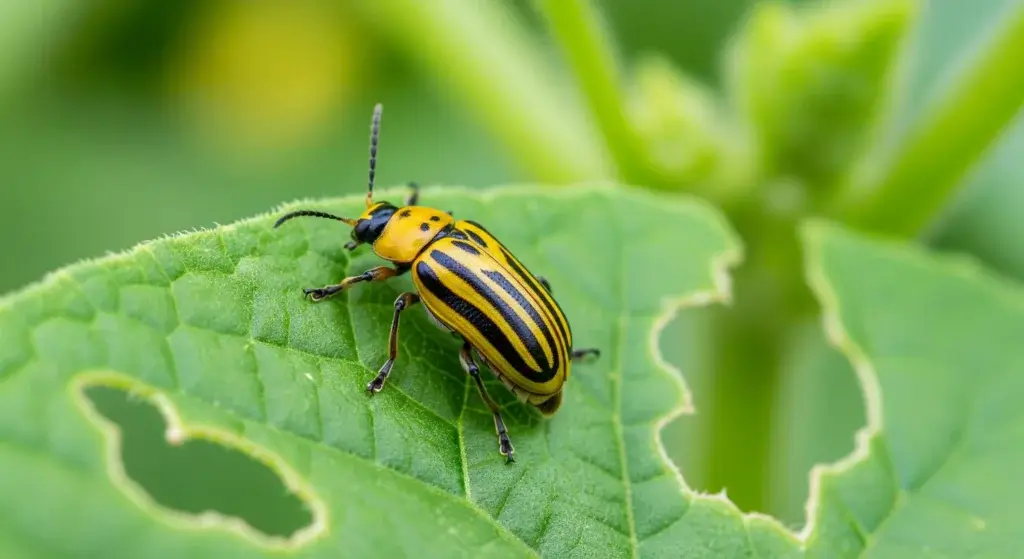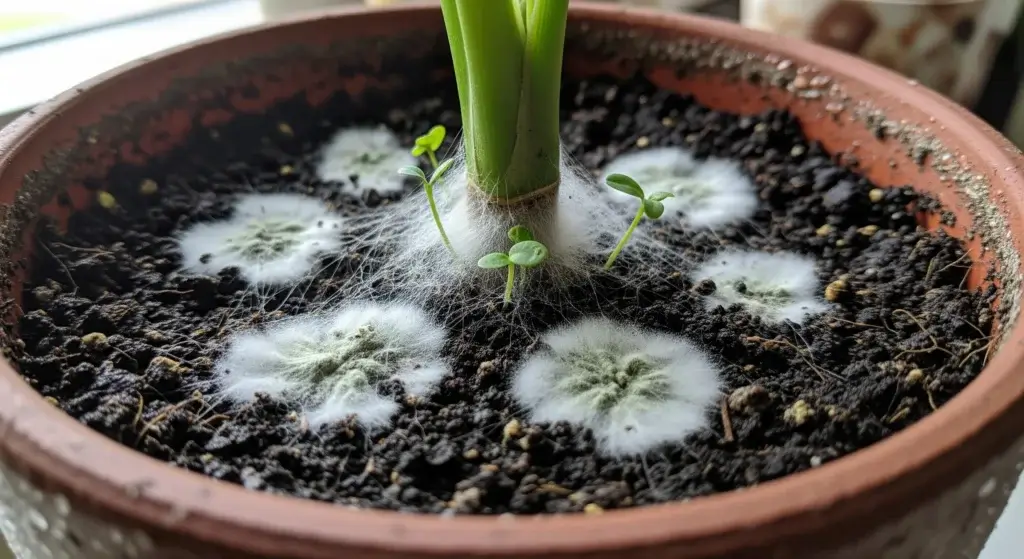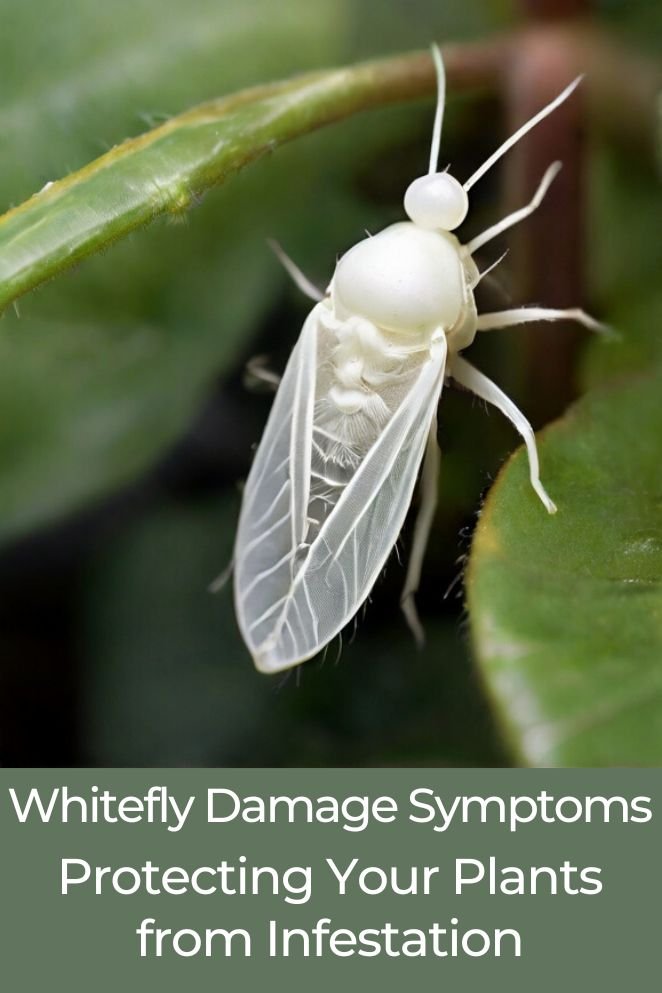
At first glance, whiteflies might not seem like much of a threat, but these tiny insects can cause serious damage to your plants if you don’t address them promptly.
In this guide, we’ll take a deep dive into the world of whiteflies, examining the signs of their damage and offering practical strategies for controlling them effectively.
An Overview of Whiteflies
Whiteflies belong to the Aleyrodidae family and are commonly found in temperate and tropical regions around the world.
They are not actually flies, but are more closely related to aphids and mealybugs.
Whiteflies can infest a wide variety of plants, both indoors and outdoors.
- Read also: A Guide to Whitefly Control on Vegetables
- Read also: Neem Oil for Whitefly: A Guide to Effective Pest Control
Feeding habit
Whiteflies feed on the sap of plants, primarily targeting the underside of leaves where they can access nutrient-rich phloem vessels.
By piercing the plant tissue with their needle-like mouthparts, known as stylets, they extract sap, depriving the plant of vital nutrients.
Life cycle
The life cycle of whiteflies typically consists of four stages: egg, nymph, pupa, and adult.
Eggs are laid on the underside of leaves in small clusters and hatch into nymphs within a few days.
Nymphs undergo several molts before reaching the pupal stage, where they undergo metamorphosis before emerging as adults.
Reproduction
Whiteflies are prolific reproducers, with females capable of laying hundreds of eggs during their lifetime.
This rapid reproduction can lead to exponential population growth, making whiteflies a formidable pest in agricultural and horticultural settings.
Host plants
While whiteflies are known to infest a wide range of plants, they exhibit preferences for certain species.
Common host plants include tomatoes, cucumbers, citrus trees, and ornamental plants such as poinsettias and hibiscus.
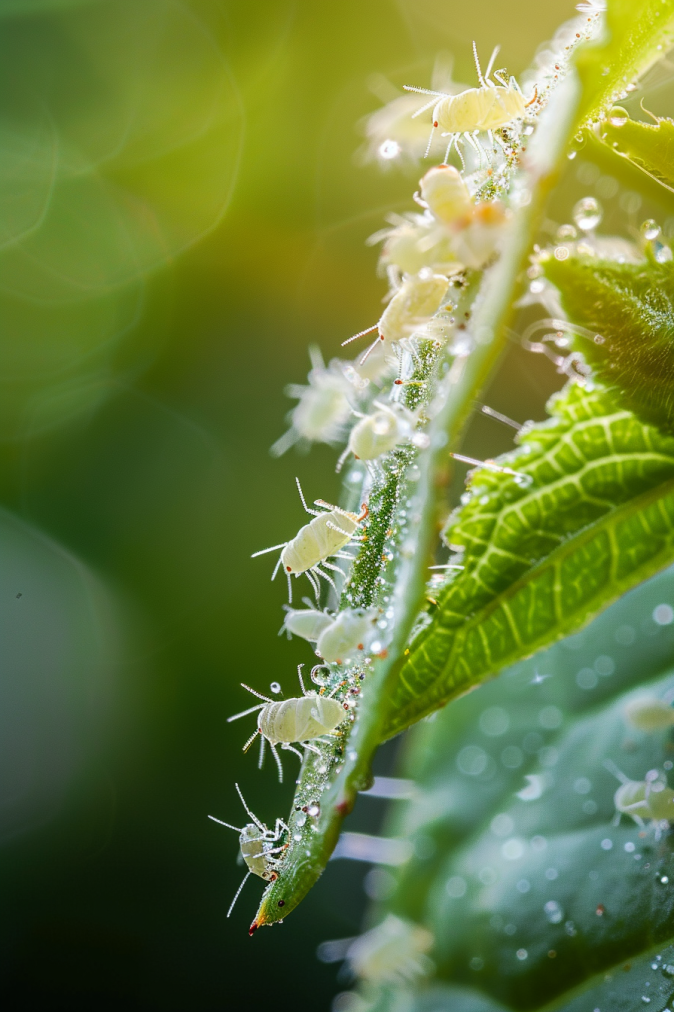
Whitefly Damage Symptoms
Identifying whitefly damage can be crucial in preventing extensive harm to your plants.
Here are some common symptoms to watch out for:
Yellowing leaves
Whiteflies extract sap from plants, depriving the leaf of vital nutrients causing leaves to turn yellow and eventually wilt.
This discoloration is often one of the first signs of whitefly infestation.
Honeydew
Whiteflies excrete a sugary substance called honeydew while feeding, which can coat leaves and attract other pests like ants and sooty mold.
Sooty mold
The honeydew left by whiteflies provides a perfect breeding ground for a black fungus called sooty mold.
This covers the leaves in a black soot-like layer, further blocking sunlight and hindering photosynthesis.
Stunted growth
Plants affected by whiteflies may exhibit stunted growth due to the loss of vital nutrients from constant sap extraction.
Curling or distorted leaves
Infested plants may develop curled or distorted leaves as a result of whitefly feeding activity.
Wilting and premature leaf drop
Severe whitefly infestations can lead to wilting and premature leaf drop, ultimately compromising the health and vigor of the plant.
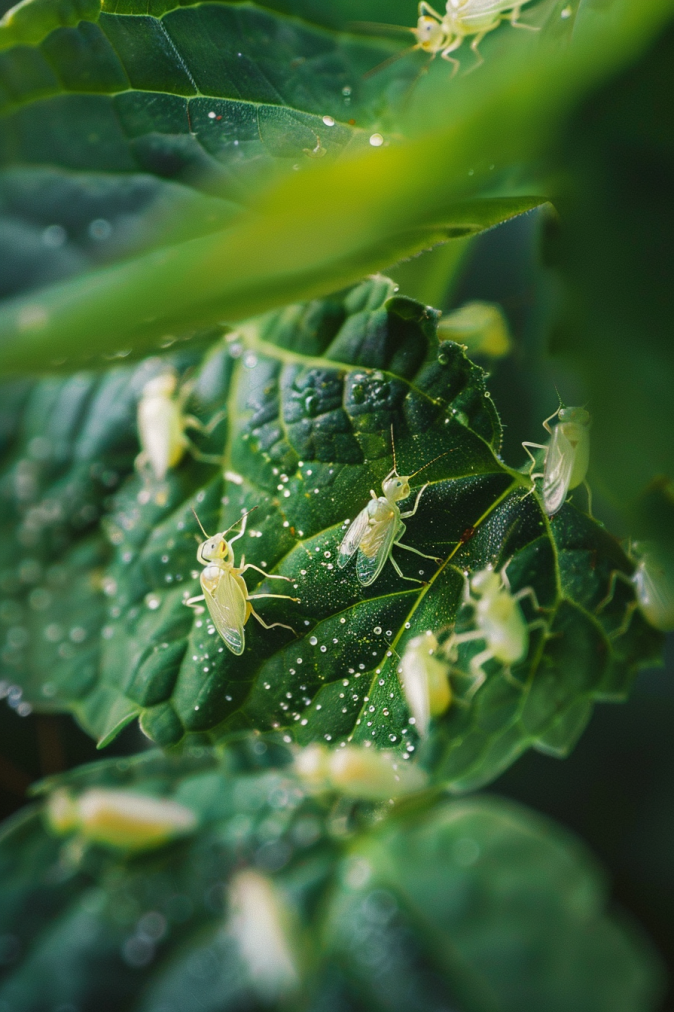
How to Control Whitefly Damage?
Now that we’ve identified the symptoms, let’s explore effective control measures to manage whitefly infestations:
Manual removal
If the infestation is minor, you can try manually removing the whiteflies and their eggs with your fingers, a damp cloth, or a strong blast of water.
Pay close attention to the undersides of leaves where they typically congregate.
Natural predators
Introducing natural predators like ladybugs, lacewings, or parasitic wasps can help control whitefly populations.
Ladybugs and lacewings feed on whitefly eggs and nymphs, while parasitic wasps lay their eggs inside whitefly nymphs, killing them.
Horticultural oils
Horticultural oils suffocate whitefly nymphs and adults by coating their bodies and blocking their airways.
These oils are typically applied to the affected plants, covering the undersides of leaves where whiteflies commonly feed and lay eggs.
Some types of horticultural oils used for managing whiteflies are neem oil,
insecticidal soap, sun spray, volk oil, soybean oil, cottonseed oil, garlic oil, and pepper oil.
Reflective mulches
Reflective mulches, such as aluminum foil or metallic plastic, can be placed around plants to deter whiteflies.
These mulches confuse whiteflies by reflecting light, making it difficult for them to locate host plants.
By reducing the attractiveness of the area to whiteflies, reflective mulches help minimize infestations.
Sticky traps
Yellow sticky traps can attract and trap adult whiteflies, helping to reduce their population. However, they won’t eliminate the entire infestation.
Pruning
Prune heavily infested leaves, this can help reduce the whitefly population and improve air circulation around the plant.
Chemical methods
If natural methods are unsuccessful or impractical, you may need to resort to insecticides.
Chemical methods can be effective but are typically more potent and should be used as a last resort.
Insecticides
Choose a product specifically labeled for whiteflies and follow the instructions carefully.
Be sure to wear protective gear and apply the insecticide in a well-ventilated area.
Systemic insecticides
These insecticides are absorbed by the plant and circulate throughout its tissues, killing whiteflies that feed on the sap.
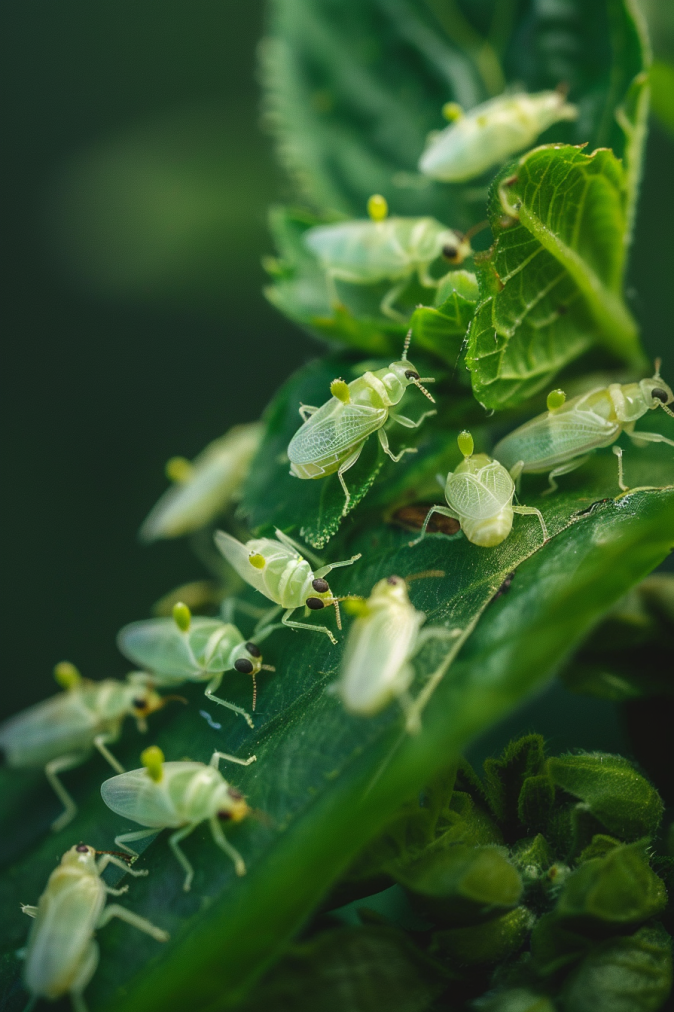
- Read also: Understanding and Preventing Grasshopper Plant Damage
- Read also: Natural Pest Control Methods for Your Vegetable Garden
Conclusion
Understanding the signs of whitefly infestation and taking action to control them is crucial for protecting your plants.
Despite their small size, whiteflies can cause significant damage to your garden.
By learning to recognize the symptoms of whitefly infestation and applying suitable control methods, you can effectively shield your plants from their harmful impact.
FAQs
While whiteflies can infest a wide range of plants, they tend to prefer certain species such as tomatoes, cucumbers, and poinsettias.
While it’s challenging to completely prevent whitefly infestations, practicing good garden hygiene, such as removing weeds and regularly inspecting plants for signs of pests, can help minimize the risk.
Chemical pesticides can be effective against whiteflies, but they may also harm beneficial insects and disrupt the ecosystem. It’s advisable to explore organic and eco-friendly alternatives first before resorting to chemical solutions.


